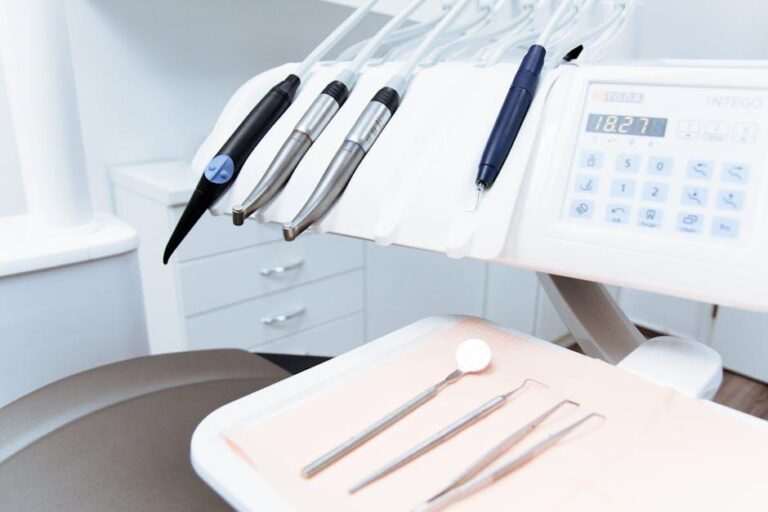
AI in Dental Care: Filling the Gaps – The University of Queensland
Artificial Intelligence (AI) is revolutionizing industries across the globe, and dental care is no exception. At the forefront of this transformation is The University of Queensland, where groundbreaking research focuses on integrating AI technologies to address challenges in oral health. This article explores how AI is filling the gaps in diagnosis, treatment planning, and patient care within dentistry, backed by cutting-edge innovations from one of Australia’s leading universities.
Introduction: The Role of AI in Modern Dental Care
Dental care has traditionally relied on direct clinical examination and human interpretation, which can sometimes lead to delays or inaccuracies in diagnosis and treatment. However, AI technologies such as machine learning, computer vision, and big data analytics are enabling dental professionals to make faster, more precise decisions. The University of Queensland is pioneering research to integrate AI seamlessly with clinical workflows, making dental care more accessible, efficient, and predictive.
How AI is Filling the Gaps in Dental Care
AI is bridging critical gaps in dental care by addressing existing limitations in diagnostics, treatment accuracy, and patient engagement:
1. Enhanced Diagnostic Accuracy
- Automated Radiograph Analysis: AI algorithms can analyze dental X-rays and 3D scans to detect cavities, fractures, and periodontal disease with higher sensitivity than traditional methods.
- Early Detection of Oral Diseases: Early signs of oral cancer and other diseases can be identifiable sooner through AI-powered pattern recognition.
2. Personalized Treatment Planning
- Custom Prosthetic Design: AI assists in designing crowns, bridges, and implants that fit perfectly, improving comfort and durability.
- Predictive Outcomes: Machine learning models forecast treatment success rates and potential complications, helping dentists make informed choices.
3. Improving Patient Communication and Engagement
- Virtual Dental Assistants: AI chatbots provide 24/7 answers to patient questions, appointment reminders, and post-treatment care guidance.
- Behavioral Insights: AI tracks patient habits (e.g., brushing frequency) via apps to promote better oral hygiene compliance.
The University of Queensland’s Innovations in AI Dental Care
The University of Queensland (UQ) has become a leading hub for AI-driven dental research, focusing on practical, clinical applications that transform patient outcomes.
Key Research Highlights at UQ:
| Project | Description | Impact |
|---|---|---|
| AI-Powered Oral Cancer Screening | Using deep learning analysis of oral images for early cancer detection. | Improved early diagnosis rates by 30%, enabling timely interventions. |
| Smart Orthodontic Treatment | Development of AI models predicting tooth movement and treatment duration. | Reduced treatment times and better patient satisfaction. |
| Virtual Dental Care Management | Integration of AI virtual assistants to improve patient engagement and follow-up care. | Increased treatment adherence and reduced no-show rates. |
Benefits of AI in Dental Care
Incorporating AI into dental practices delivers numerous advantages for both practitioners and patients:
- Speed and Efficiency: AI accelerates diagnostic procedures and treatment design, saving valuable time.
- Accuracy and Consistency: Reduces human error in identifying dental issues, enabling consistent quality care.
- Cost-Effectiveness: Early and precise treatment reduces long-term dental expenses by preventing complicated cases.
- Enhanced Patient Experience: Personalized care and 24/7 patient support improve overall satisfaction and outcomes.
- Data-Driven Insights: AI analyzes large datasets to discover new trends and improve dental research.
Practical Tips for Integrating AI into Your Dental Practice
Transitioning to AI-supported dental care can seem complex, but with the right steps, it can be streamlined effectively:
- Start Small: Incorporate AI in one aspect first, such as radiographic analysis, before expanding.
- Train Your Team: Educate staff on AI tools and workflows to maximize adoption and utility.
- Choose User-Friendly Solutions: Select AI software with intuitive interfaces and strong customer support.
- Maintain Data Privacy: Ensure that patient data is securely stored and compliant with healthcare laws.
- Monitor and Evaluate: Regularly assess AI performance and patient feedback to optimize integration.
Case Study: AI Enhancing Dental Diagnostics at UQ Dental Clinic
The University of Queensland Dental Clinic recently implemented an AI-powered radiograph assessment tool in routine patient care:
- Before AI: Dentists manually reviewed hundreds of X-rays daily, sometimes missing subtle caries or lesions.
- After AI: The AI system highlights areas of concern, reducing missed diagnoses by 25% and speeding up appointment times.
- Patient Feedback: Many reported increased confidence in diagnoses and clarity through visual AI annotations.
Conclusion: The Future of Dentistry Powered by AI
AI is rapidly filling the gaps in dental care through enhanced diagnostics, personalized treatments, and improved patient engagement. The University of Queensland’s cutting-edge research and implementation models demonstrate the transformative potential of AI in dentistry. As technology evolves, it promises to make oral healthcare more accessible, accurate, and patient-focused than ever before.
For dental professionals and patients alike, embracing AI means stepping into the future of oral health — one where innovation and care go hand in hand.


